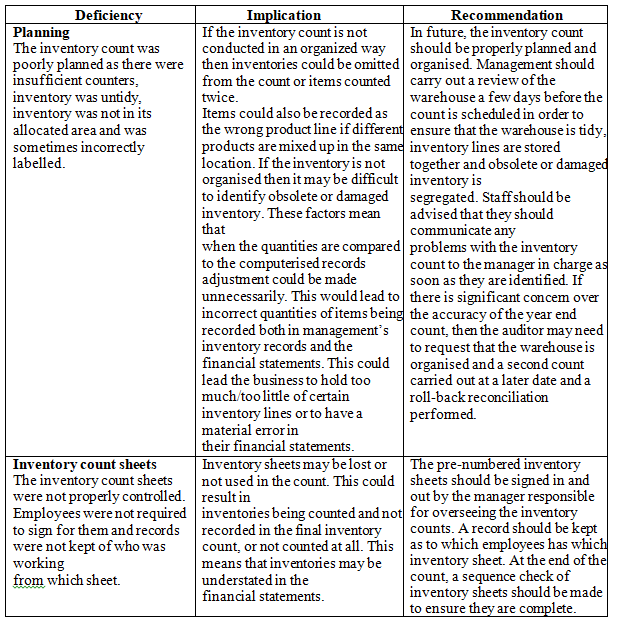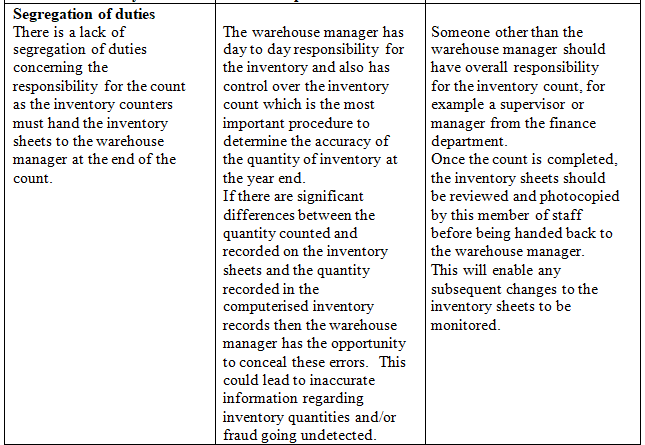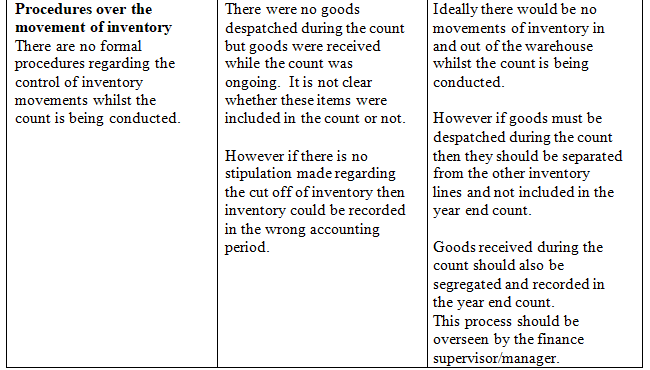May 2017 Q5
ISA 510 Initial audit engagement provide guidance to auditors on the audit of opening balances when conducting an initial audit engagement. Explain the audit objective and the audit procedures in relation to opening balances. (10 marks)
View Solution
Objective of ISA 510
In conducting an initial audit engagement, the objective of the auditor with respect to opening balances is to obtain sufficient appropriate audit evidence about whether:
a) Opening balance contain misstatements that materially affect the current period’s financial statements; and
b) Prior period closing balances have been correctly brought forward or, where appropriate, restated; and
c) Appropriate accounting policies reflected in the opening balances have been consistently applied in the current period’s financial statements, or changes thereto are appropriately accounted for and adequately presented and disclosed in accordance with the applicable financial reporting framework.
Audit Procedures with regard to Opening Balances – ISA 510 (5-9)
The auditor shall read the most recent financial statements, if any, and the predecessor auditor report thereon, if any, for information relevant to opening balances, including disclosures
The auditor shall obtain sufficient appropriate audit evidence about whether the opening balances contain misstatements that materially affect the current period’s financial statements by:
- Determining whether the prior period’s closing balances have been correctly brought forward to the current period or, when appropriate, have been restated;
- Determining whether the opening balances reflect the application of appropriate accounting policies.
- Where the prior year financial statement were audited, reviewing the predecessor auditor’s working papers to obtain evidence regarding the opening balances;
- Evaluating whether audit procedures performed in the current period provide evidence relevant to the opening balances; or
- Performing specific audit procedures to obtain evidence regarding the opening balances.
- If the auditor obtain audit evidence that the opening balances contain misstatements that could materially affect the current period’s financial statements, the auditor shall perform such additional audit procedures as are appropriate in the circumstances to determine the effect on the current period’s financial statements. If the auditor concludes that such misstatements exist in the current period’s financial statements, the auditor shall communicate the misstatements with the appropriate level of management and those charged with governance.
- Relevant Information in the predecessor Auditor’s Report
If the prior period’s financial statement were audited by a predecessor auditor and there was a modification to the opinion, the auditor shall evaluate the effect of the matter giving rise to the modification in assessing the risk of material misstatement in the current period’s financial statements in accordance with ISA 315 (Assessing risk of misstatement)
Auditors go through a checklist of procedures before expressing opinion on the financial statements. Explain the audit procedure in relation to the review of the overall financial statements. (5 marks)
View Solution
a. That the entity use acceptable accounting policies for suitability, consistency and correct application.
b. Review of the classification, description and adequate disclosure of items in the financial statements
c. Review of the view given by the financial statements whether it is in accordance with the auditor’s knowledge of the economic circumstances of the business
d. Review of the financial statements to ensure that the view given thereof will accord with any conclusions to be drawn by reasonable users of the financial statements
e. Review of post balance sheet events and contingencies to ensure proper reflection of adjusting events and crystallized contingencies and disclosure of material non-adjusting events and possible contingent liabilities
f. Review of the financial statement for going concern applicability
g. Review of the financial statement for compliance with accounting standards
h. Review of the financial statement for compliance with statutory requirements
i. Final analytical review to ensure that the financial statement as a whole make sense
j. Review of the director’s report to ensure that it is consistent with the financial information
k. Review to ensure that issues relating to scope limitations or disagreements have been properly addressed.



